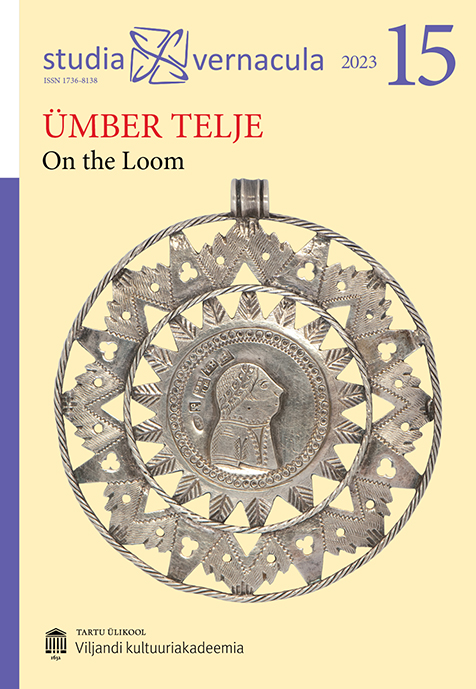Muudetava tihedusega kangasuga. Ühe tööriista leiutamise lugu / Weaving reed for adjusting warp density while weaving: the inventing of a tool
DOI:
https://doi.org/10.12697/sv.2023.15.152-181Abstract
The article is built around invention as a process, DIY as an attitude, and the activities and procedures necessary to make an invention in the field of crafts. The article opens a case study of the invention of one handweaving tool – a reed in which density is adjustable during weaving – tracking its journey from an idea to a prototype, a utility model, and a product. An overview of previous versions of the reed that allow changing the warp density is given.
As follows, the process of invention has been described according to the stages perceived by the author, paying attention to her own experience as the inventor, and to factors that promote and hinder product development. The inventor’s choices in the process have been influenced by self-definition as a user and as an entrepreneur. Auto-ethnography has been used as a method for writing the article.
I examine how DIY culture manifests itself in this specific case of the product development process, and how my roles as the inventor, entrepreneur, and weaver act in harmony in this process. The process of inventing in my case can be divided into the following stages: first – addressing the problem (how the weaver can change the warp density while weaving), and imagining the possible solutions; second – analysing the present situation to understand what spatial limitations of the handloom must be considered, and what moves can be made by the weaver during the weaving process. In order to reach a solution to the problem outlined above, I made a DIY version of the prototype tool using available materials (bricolage), and then used the tool myself. With the help of Ago Jääger, an engineer, the prototype was then developed into the version that could be manufactured. Valuable contacts were provided by Anne Erlach from the Patent Office of Estonia. Thanks to the support from textile specialists Vibeke Vestby (Norway), Andreas Möller (Germany) and Tina and Bernt Arne Ignell from VÄV (Scandinavian weaving journal), I started to promote the tool and reached out to the users who were inspired by the new warp manipulation possibilities and the variations that the tools brought with them.
Here are the working principles of the three versions of adjustable reeds compared with that of a previously existing tool, the fan reed: Fan reed (invention from the 19th century) consists of dents that are under angles. By raising or lowering the tool, the warps get pushed into the new position. The pattern possibilities are restricted as the groups are dependent upon the position of the reed, and the wide setting and narrow setting are always side by side. Adjustable reed (AdRe) (Utility model, 2009) was the first version of my reeds, where warps can be manipulated during the weaving process in individual groups. Distance between the dents ischanged by changing the angle of the arms. Folding reed. This version of an adjustable reed was inspired by a carpenter’s folding ruler. With this type of reed dramatic changes in fabric width are also possible; the position of one section of warps influences the position of the sections to the right and to the left of it. Adjustable sliding weaving reed (Utility model published in 2014). Adjustable sliding weaving reed enables the weaver to change the density of the reed (affects the warp density) in independent groups. It can also make twists in warps as the modules can be removed from the rail and fixed in a new position, and alter the width of the fabric while weaving. Commercially, this version is promoted under the name RailReed.
Examples are given of weavers and artists who use the possibilities of this tool to change the thread density in groups, as well as the fabric width during weaving, and how such manipulations of fabric structures are connected to the creative projects of these authors.
Keywords: reed, adjustable weaving reed, adjusted warp density, handloom, inventing, DIY

